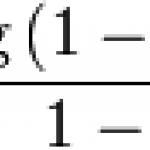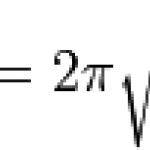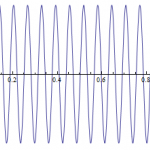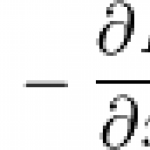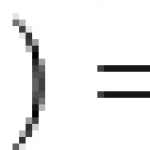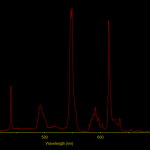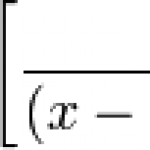
Happy new year! While we're thinking about years, why don't we think about one of the first guys to explore the physical reason behind the year?
This nattily dressed gentleman is Johannes Kepler, who worked out three basic mathematical laws of planetary motion around the year 1605. He did so from scratch, purely based on phenomenological examination of astronomical data. Newton wouldn't figure out the theory behind these laws for about another century, but with Newton's classical mechanics we can show that his basic laws of motion imply that Kepler's laws must be true.
The third of Kepler…
Around ScienceBlogs recently there's been some discussion about the following eyebrow-raising Toys-R-Us advertisement:
The ad has caused rumblings of discontent because it's pretty obvious the pink microscope and telescope are supposed to be "girl" editions, and in both cases the pink one is the smallest, dinkiest, and lowest powered. The bare fact of pinkness in and of itself isn't really something I'd care about - if the same dopey company wants to make "boy" microscopes in MARPAT it would be stupid but as long as it's a good scope then I have no objection to the consumer getting what…
Still working my way through Neal Stephenson's Quicksilver, and I'm now about half way through it (and thus about 1/6 of the way through the whole Baroque Cycle). The book is about the intrigues and adventures of Daniel Waterhouse and Jack Shaftoe, but it's actually about the birth of the modern world through the twin developments of science and finance.
There's no shortage of science. One nearly throwaway vignette involves Robert Hooke attempting to empirically resolve a debate concerning the nature of stars, roughly, are they all sort of pasted on a crystal dome not so far beyond the edge…
Ok, back from Christmas hiatus which I, uh, forgot to announce. But I am pleased that I survived a full 96+ hours with exactly zero internet access. Didn't even miss it. Much.
Over that break, I happened to be in a bookstore in exurban Atlanta. Gravitating as I tend to do toward the science section, I saw this book:
It is of course How to Teach Physics to Your Dog, by ScienceBlogs' own Chad Orzel. I can't review it yet because I haven't sat down and read it yet (I have a copy in the mail), though based on my bookstore perusing I am certain it will be as brilliant as expected, which is…
In the study of probability there's a concept called expected value. If you're measuring some random process, the expected value is the average over a very large number of trials. For instance, if you roll one dice you can expect to come up with a value of 3.5. Now obviously no individual roll can give you a 3.5, that's just the average you'll get over a large number of trials.
The expected value is calculated in the following way. Take the probability of one of the outcomes, multiply by the value of that outcome, repeat for all possible outcomes, and add them all up. For dice, the…
Before her career took an unfortunate wrong turn, a young and talented Lindsay Lohan gave us a charming and popular comedy called Mean Girls. Time has been good to the careers of some of the others involved, Tiny Fey and Rachel McAdams perhaps most notably. But the film did something that very other movies have ever done - given us a climax explicitly involving a function of a real variable:
Lindsay's character is asked to find the limit of this function as x approaches zero. We notice that the function is not defined at zero - in the denominator, cos(0) = 1. This means we have 1 - 1 = 0…
Some of you may have heard in the news recently about a possible detection of the particles that may make up dark matter:
Detectors in the mine, part of the Cryogenic Dark Matter Search experiment, were tripped recently by what might be weakly interacting massive particles, or WIMPs. WIMPs are among the most popular candidates for dark matter, the invisible material that scientists think makes up more than 80 percent of the mass in the universe. Recently detectors in the mine recorded two hits with "characteristics consistent with those expected from WIMPs," according to a statement posted…
I've finally buckled down and started reading Neal Stephenson's Baroque Cycle. Though the author is probably my favorite living fiction writer, the three-volume, ~3000 page monstrosity is just something that's hard for a busy grad student to tackle. I'm only maybe 1/5th through the first volume, but so far so good. Plenty of interesting science as well.
One character (pre-Newton) correctly surmises that the gravitational force of the earth must diminish with distance. To check this, he proposes an experiment that sounds suspiciously Einsteinian but is in fact entirely classical. Put a…
This is a painting called The Supper at Emmaus. Its subject is the story in the 24th chapter of Luke's gospel, and the story of the painting is itself quite a tale.
It was discovered from obscurity in 1937 by the Dutch painter Hans van Meegeren, and it was acclaimed by experts as a heretofore unknown masterpiece of the legendary 17th century painter Johannes Vermeer. Soon other previous unknown Vermeers began to surface thanks to his efforts. During the occupation by the Nazis, van Meegeren sold some of the paintings to the loathsome Hermann Göring for the equivalent of millions of…
You probably haven't been able to avoid seeing the televised bombs AT&T and Verizon have been throwing at each other over the maps of their coverage. Both sets of commercials (to differing degrees) fail to make it especially clear just what their maps mean to the consumer. For instance: Verizon's commercial brags of overwhelming coverage while showing AT&T's comparatively sad little sparse map. AT&T fires back with a different map and a claim that they cover 97% of the US population. Both sets of claims are correct - if you pay close attention. Verizon's map indicates 3G…
Here's a very simple function:
You give it a positive real number, it gives you the square root. It maps 81 to 9, 100 to 10, 2 to 1.414..., and so on and so forth. It's pretty much the only one-argument function that's built into most pocket calculators, which says something about its utility and ubiquity. But let's say we did want to come up with an easy way to get approximate square roots. Maybe our calculator is broken, or (much more likely) maybe we're looking for an analytic approximation that's easier to deal with than the square root in and of itself. To generate our…
Normally you wouldn't think of chick lit as experimental literature, but the interplay between the book and film versions of Bridget Jones's Diary is so bizarre as to be practically science fiction.
The novel is itself a very loose retelling of Jane Austen's classic Pride and Prejudice. That novel is of course the gold standard for pretty much all romantic fiction since then, and Bridget Jones is far from the first to try a more or less modern retelling. Pride and Prejudice itself features the now-legendary Elizabeth Bennett and Mr. Darcy, who meet, instantly dislike each other, and…
I'm a relatively light sleeper. The ear-piercing klaxons that are most alarm clock buzzers are way more than necessary to get me out of bed, and even most music stations are more than I want to deal with abruptly when I'm trying to work up the will to leave warm comfort to go to a day's work. So it's usually the dulcet tones of NPR that start when the clock alarm reaches the specified time.
This morning the programming included a short "Everyday Science" piece about how parachutes work. Their explanation went more or less like this: when you open the parachute, the chute pushes the air…
A few days ago we looked at what a Lagrangian actually is. The short of it is that it's the kinetic energy minus the potential energy of a given mass*. More importantly, if you construct the classical action by integrating the Lagrangian over the time (see the previous link for a more full explanation) you'll find that the actual trajectory is the one that minimizes the action.
It turns out that the way to find the path that minimizes the action is pretty easy. In honor of two of its pioneers, we call it the Euler-Lagrange equation. If you can find a solution that satisfies the Euler-…
Just a quick one today, as I get caught back up from Thanksgiving. We all know and love the very basic quadratic function. Any second-order polynomial will give you a nice little parabola, which of course is ubiquitous in physics. We all know what that looks like. But what if we're willing to square complex numbers instead of just real numbers? Traditionally we denote complex numbers with z instead of x, so our Sunday Function is:
Ok, so what happens when we square a complex number? Well, we can write any complex number as (a + bi), where "a" and "b" are real numbers. "a" is the real…
Yesterday, as expected, severe underdog Texas A&M lost to #3 ranked Texas. Not as expected, the game was competitive right to the end, with an upset being threatened down to the final minutes. It was a great game to watch, with a final score of 45-35 - the highest total score in the history of the rivalry.
In this game as with pretty much all games at the college and pro level, the offense is very reliant on the forward pass. The quarterback picks a wide receiver, throws the ball, and with some luck the ball is caught for a gain. Now pretend you're filming such a pass on a video…
First of all, happy Thanksgiving everyone! I hope you spend the day happily with the people you care about, and remember to spend a moment or two reflecting on the things for which you're thankful this year. Now on with the show:
Back when I first started writing this blog, I focused mostly on problem solving. The goal was to bridge the gap between popularization and textbook. I was always doubtful there was much of a market for this, but of course there are at least some interested people and especially since writing is so fun I was and am I'm more than happy to fill that gap. Over the…
A quick and simple way to roughly check the calibration of a spectrometer is to point it at the ceiling. Fluorescent lights put out a particular spectrum, and by comparing the colors the spectrometer senses to the colors you know the light emits, you can see if your spectrometer is accurate to a first approximation. I did this very thing yesterday, with the following result:
This is about what we expect to see. Fluorescent lighting consists of a relatively discrete set of colors compared to the broad Planck's law emission of a hot incandescent bulb. The central peak in the florescent…
If you look at an incandescent light in a spectroscope, you'll see a broad and continuous range of light emitted over a large portion of the visible spectrum. This combination of colors looks white to us. At the other extreme, laser light generally consists of just a tiny slice of the frequency spectrum, and so it appears highly monochromatic. The laser light is not literally mathematically all of the exact same frequency, instead it's distributed closely about the laser frequency according to some probability distribution that can vary depending on the specifics of the laser.
Very…
Around ScienceBlogs, people who don't accept global warming as a real phenomena tend to get called denialists. In the interests of full disclosure, I should admit that I'm not a denialist but rather a global warming defeatist. Doesn't matter how bad or not CO2 is, ain't nothin' gonna stop it. People will not give up electricity and transportation in the developed world (nor should they), and people in the developing world will not be give up the quest for developed-world living conditions (nor should they). As such it's either massive and immediate worldwide switches to nuclear power and…



